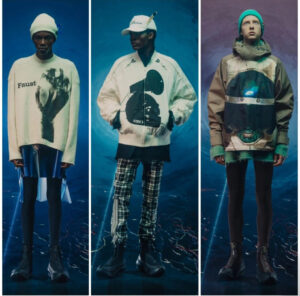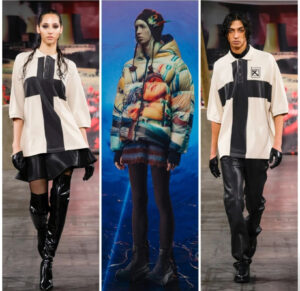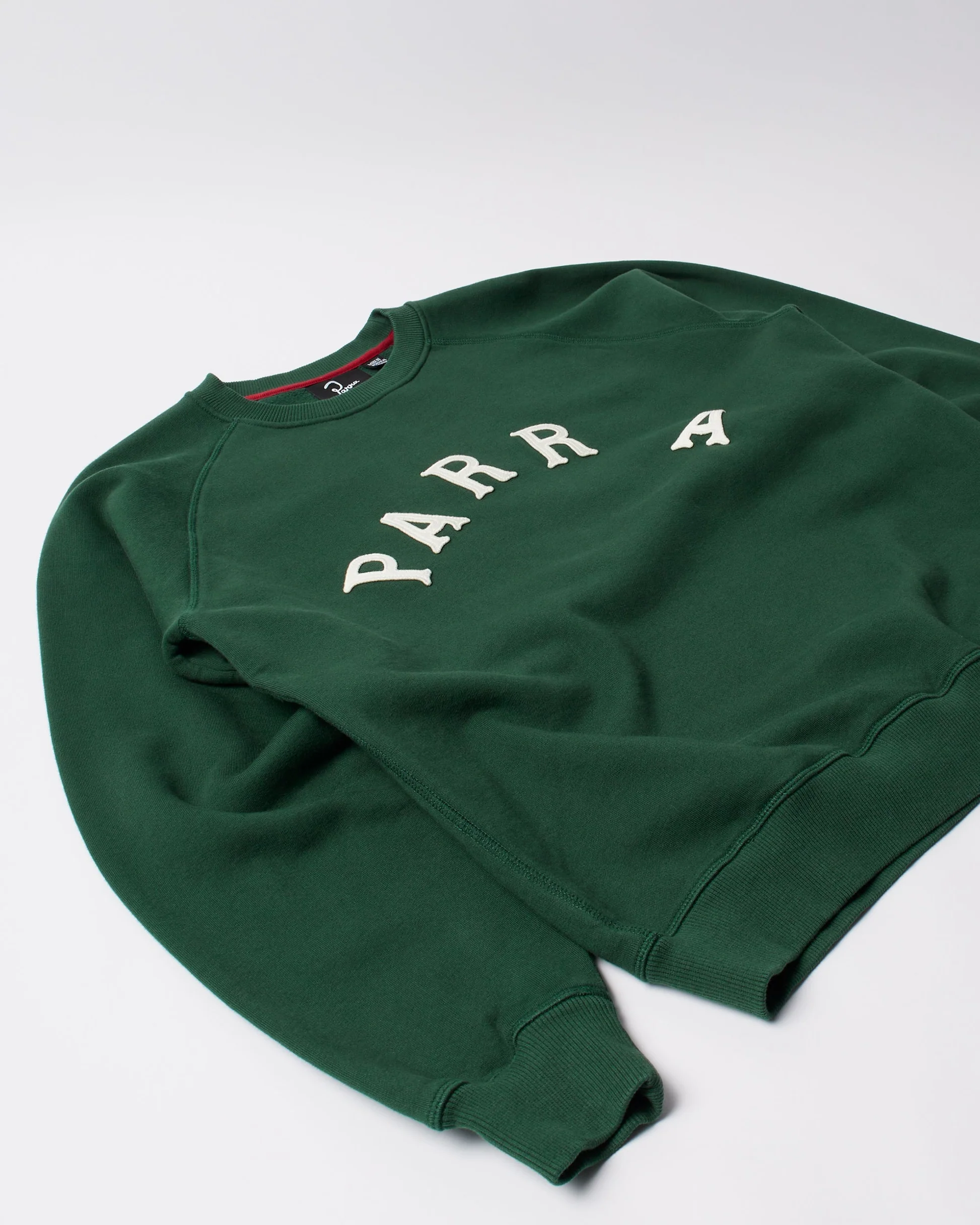

Jun Takahashi’s Undercover has long been a brand that operates at the intersection of music, subculture, and avant-garde fashion. His latest menswear collection, titled “Interface”, takes its name from the 1977 album by French electro-rock band Heldon, setting the tone for a collection steeped in musical inspiration and cultural references.
From technical jackets emblazoned with Daft Punk-esque artwork to nods to German experimental band Faust, the collection remixes the past into a futuristic vision of menswear. Takahashi’s ability to balance tradition with rebellion, craftsmanship with playfulness, and nostalgia with modernity shines through in every garment.
The Musical DNA of “Interface”
Heldon: A Sonic Foundation for Fashion
Naming the collection Interface after Heldon’s 1977 album wasn’t just a random choice—it was a statement of intent. Heldon, an experimental electronic band led by Richard Pinhas, blended synth-heavy progressive rock with avant-garde aesthetics, prefiguring the sound of Daft Punk and modern electronic music.
By using this reference, Takahashi draws a parallel between music and fashion, treating his garments like reinterpretations of classic records—covers that pay homage while adding a new layer of innovation.
Faust: The “German Beatles” Influence
Beyond Heldon, Takahashi also incorporated imagery from Faust, the legendary German experimental band often referred to as the “German Beatles” due to their groundbreaking influence on krautrock and avant-garde music. Their presence in the collection speaks to Takahashi’s appreciation for nonconformity and anti-mainstream artistry, a philosophy that deeply informs his fashion.
These musical inspirations manifest in the graphic prints, layered textures, and unpredictable combinations that define Interface.
Key Looks and Design Highlights
Classic Undercover with a Futuristic Twist
One of the collection’s standout pieces was a technical jacket featuring the album cover of Interface. This piece served as the visual anchor of the collection, blending music history with contemporary streetwear aesthetics.
Another striking graphic piece was a long-sleeve T-shirt and gauntlets printed with an image of Faust, reinforcing the collection’s deep musical ties.
Tradition Meets Punk: Subverted Classics
Takahashi is a master of recontextualizing traditional garments, infusing them with unexpected details and punk sensibilities. In Interface, this approach was evident in:
•A double-faced camel duffle coat lined in check, a piece that felt heritage yet hyper-modern.
•A tartan blouson with triple zippers, channeling both punk aesthetics and functional utility.
•A kilt, which added an element of rebellious masculinity, a theme often explored in Undercover collections.
Baroque Meets Streetwear: The Accessories
Accessories in Interface played with contrast and excess. A set of jewel-encrusted gloves and an ornate baseball cap were particularly striking, blurring the lines between opulence and underground culture.
This juxtaposition of grunge elements with extravagant embellishments embodies Undercover’s unique duality, making the collection feel both raw and refined.
Cozy Meets Creepy: Playful Yet Dark Motifs
Beyond music, Interface also featured Takahashi’s signature dark, whimsical imagery.
•Brushed cotton pajamas were printed with a young girl and her beheaded teddy bear, blending innocence with an unsettling twist.
•A camel cotton suit was subtly printed with micro-dogs, adding an element of surreal humor.
•A soft olive field jacket was constructed with a dark gray knit section at the back, introducing an unexpected textural contrast.
These designs reinforce Undercover’s ability to create wearable yet thought-provoking garments, where every detail has a narrative element.
Typography and Messaging: “Delusional Behaviour”
Typography has always been an integral part of Undercover’s storytelling. This season, the phrase “Delusional Behaviour” was scripted across the back of a black denim parka, hinting at the collection’s anti-establishment undertones.
The use of cryptic or provocative text aligns with Takahashi’s punk roots, where fashion is as much about self-expression as it is about style.
The Showroom Experience: A Rehearsal, Not a Performance
Unlike a traditional runway show, Interface was presented in a showroom setting, offering a more intimate and tactile experience. Viewing a collection this way allows one to appreciate the craftsmanship, fabric choices, and subtle details up close, but it also lacks the theatrical impact of a runway show.
Takahashi’s world is deeply cinematic and immersive, and while the showroom format provided an analytical view of the collection, one can’t help but imagine how these pieces would come alive in a live runway setting with music, lighting, and movement.
That said, the curated setup still managed to capture the essence of Undercover—a brand that thrives on its fascination with the esoteric and its rejection of the obvious.
Pushing the Boundaries of Menswear
Jun Takahashi continues to redefine what menswear can be. Through collections like Interface, he challenges the conventional notions of formal vs. casual, classic vs. experimental, and refined vs. raw.
By fusing:
•Music (Heldon, Faust)
•Subculture (punk, baroque excess)
•Artistic storytelling (dark, surreal motifs)
… he ensures that Undercover remains one of the most forward-thinking brands in menswear today.
Bridging Subcultures with Luxury
Undercover is one of the few brands that successfully bridges streetwear, high fashion, and underground subcultures. Interface exemplifies this by blending everyday comfort pieces (pajamas, field jackets, soft tailoring) with conceptual, high-art influences.
This ability to merge accessibility with avant-garde thinking is what keeps Undercover relevant and respected in the ever-evolving world of menswear.
An Album Worth Revisiting
Undercover’s Interface is more than just a seasonal menswear collection—it’s a sonic and visual remix, a reinterpretation of music, history, and subculture through fashion.
By pulling from Heldon’s experimental soundscapes, Faust’s rebellious ethos, and his own archive of Undercover signatures, Jun Takahashi creates a collection that feels both deeply nostalgic and refreshingly new.
Much like a classic album that rewards repeated listens, Interface is a collection that reveals more layers, textures, and meanings the more you engage with it. Whether through thoughtful tailoring, unexpected graphics, or cryptic messaging, Takahashi continues to make Undercover one of the most thought-provoking brands in fashion today.
For those who appreciate fashion that tells a story—one woven with music, culture, and artistry—Interface is a collection worth exploring note by note, piece by piece.
No comments yet.









